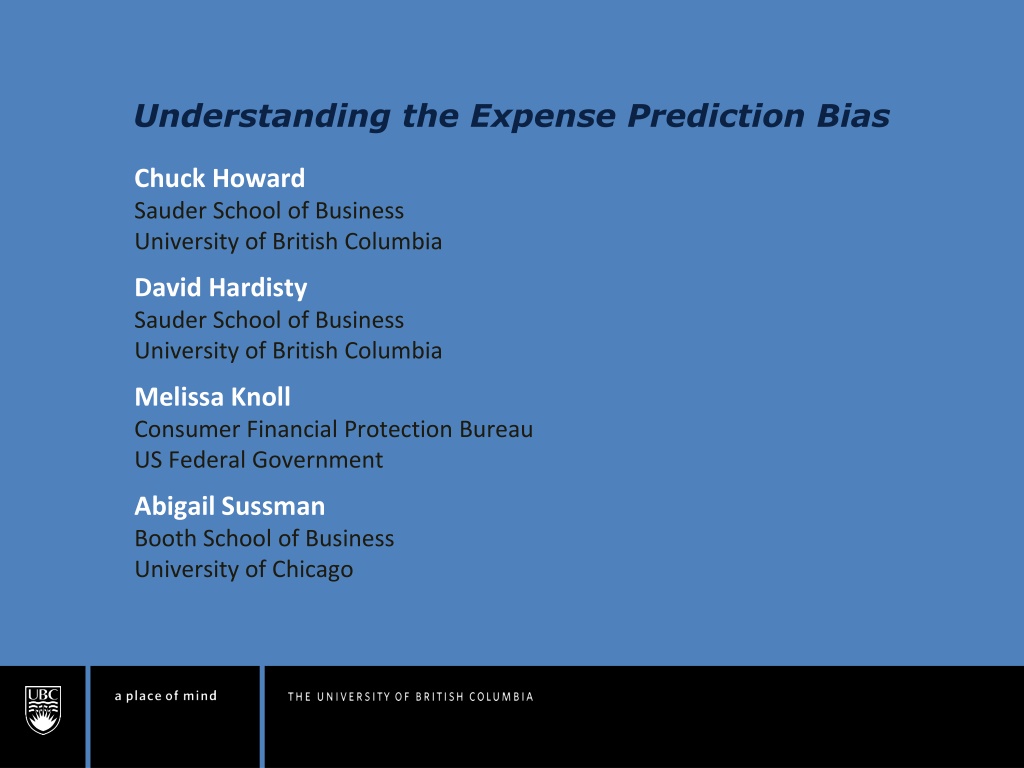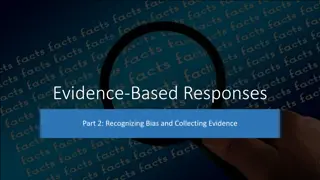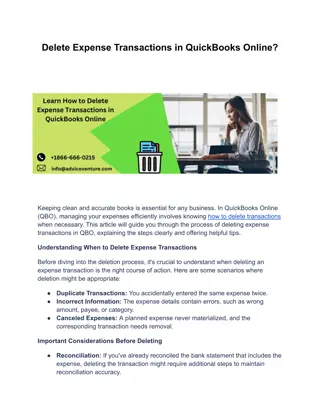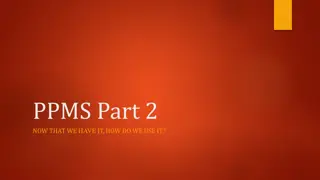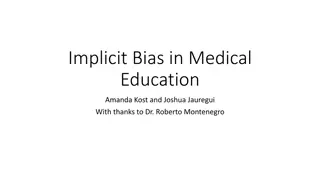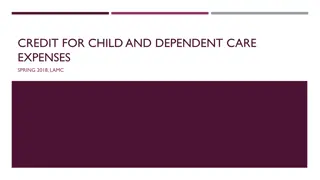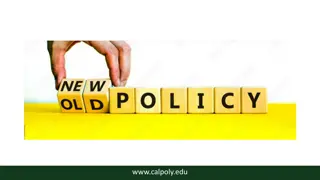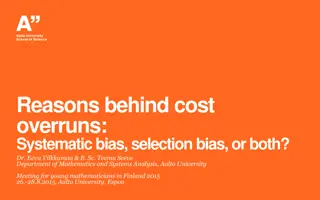Understanding the Expense Prediction Bias: Study on Underestimation of Future Expenses
Expense Prediction Bias (EPB) refers to the persistent underestimation of future expenses. Research shows that individuals tend to under-predict their future expenses due to various factors. This study explores the magnitude of EPB in an adult sample, highlighting a mean EPB of $63.58, with predicted expenses being 13.0% lower than past expenses. The study did not find a corresponding income bias. Addressing EPB is crucial for better financial planning and achieving accurate expense forecasts.
Download Presentation

Please find below an Image/Link to download the presentation.
The content on the website is provided AS IS for your information and personal use only. It may not be sold, licensed, or shared on other websites without obtaining consent from the author. Download presentation by click this link. If you encounter any issues during the download, it is possible that the publisher has removed the file from their server.
E N D
Presentation Transcript
Understanding the Expense Prediction Bias Chuck Howard Sauder School of Business University of British Columbia David Hardisty Sauder School of Business University of British Columbia Melissa Knoll Consumer Financial Protection Bureau US Federal Government Abigail Sussman Booth School of Business University of Chicago
What is Expense Prediction Bias? Expense Prediction Bias (EPB) is the persistent underestimation of future expenses
Background Expense Misprediction Previous research on expense misprediction has shown that people tend to under-predict their future expenses Ulkumen, Thomas & Morowitz (2008): monthly (vs. yearly) budget forecasts are much lower than recorded expenses Peetz & Buehler (2009): people underestimate future spending as a result of their savings goals Sussman & Alter (2012): consumers underestimate their spending on exceptional expenses due to narrow categorization
Research Questions Why is the bias important? How big is it? Does it predict negative financial outcomes? How can we neutralize it? If the answer to the questions above is yes how can make this thing go away?
Study 1 - Overview How big is the expense prediction bias in an adult sample? Is there a corresponding income bias?
Participants Participants were adult Americans recruited online via Amazon Mechanical Turk Mean age = 34 Strong majority report having at least some college education (mode response is a 4 year degree) Mode income is $30,000 - $39,999
Study 1 Method 200 participants were asked to recall and predict their expenses and income for last week and next week EPB score = recalled expenses minus predicted expenses
Study 1 Results Mean EPB = $63.58 (p=.03) ? Predicted expenses were forecasted to be 13.0% lower than past expenses No corresponding income bias was observed
Study 2 - Overview Does EPB predict negative financial outcomes? Intuition: This bias could have a negative impact on your household s financial well-being, particularly if you re low income
Study 2 - Overview Does considering past expenses neutralize EPB? Planning fallacy: The underestimation of the time it will take to complete a future task, despite the knowledge that previous tasks have generally taken longer than planned (Kahneman & Tversky, 1979; Buehler, Griffin & Peetz, 2010) People focus on plan-based scenarios rather than on relevant past experiences while generating their predictions (Buehler, Griffin & Ross, 1994)
Study 2 - Method 1514 participants recalled and predicted their expenses, then they were provided with a list of common expenses to consider and given the option to revise their initial estimates Participants were also asked to report their experience with payday loans
Study 2 Payday Loan Results Initially, EPB was modestly higher among payday loan users (mean difference =$74, p=.07) After consideration and revision, the difference in EPB between payday loan users and non-users grew to $233 (p=.01)
Study 3 Overview Is EPB impacted by expense categorization? The planning fallacy can be ameliorated when people unpack multifaceted tasks into subcomponents (Kruger & Evans, 2004)
Study 3 Overview Are people underestimating the dollar amount of future expenses, and/or the number of future expenses they will encounter?
Study 3 - Method 405 participants were randomly assigned to recall and predict expenses in either a single general expense category, or in multiple expense categories (required, optional, expected, unexpected) Expense listing task
Study 3 - Results EPB = $80.79, p<.01
Study 3 - Results EPB = $228.58, p=.02
Study 3 - Results Participants underestimated the number but not the amount of unique expenses Mean difference for number = 0.66, p<.001 Mean difference for average amount = $19.48, p=.34
Study 4 Overview Can perceived similarity or difference of upcoming expenses relative to past expense moderate EPB?
Study 4 - Method 295 Mturkers were randomly assigned to one of the following three conditions: 1. Control Condition Recall and predict weekly expenses 2. Different Condition Recall weekly expenses, provide three reasons why next week s expenses might be different from any other week s expenses, predict weekly expenses 3. Similar Condition Recall weekly expenses, provide three reasons why next week s expenses might be similar to any other week s expenses, predict weekly expenses
Study 4 - Results Expense Prediction Bias $40.00 $30.04 $20.00 $1.12 $0.00 Control Different Similar ($20.00) ($40.00) ($60.00) ($80.00) ($77.07) ($100.00) F(2, 292)=11.98, p<.001
Summary EPB is a robust phenomenon that prevails in a variety of expense frames (e.g., single vs. multi-category frames) Unique to expenses (no corresponding income bias has been observed) Associated with risky financial outcomes such as payday loans use Associated with consumers underestimating the number of future expenses, but not the amount of each one May be reversed by the perceived differentness of future expenses to past expenses
Directions for Future Research What are the downstream consequences of the bias? Acceptability of payday loan rates Sensitivity to APR
Thank you chuck.howard@sauder.ubc.ca
